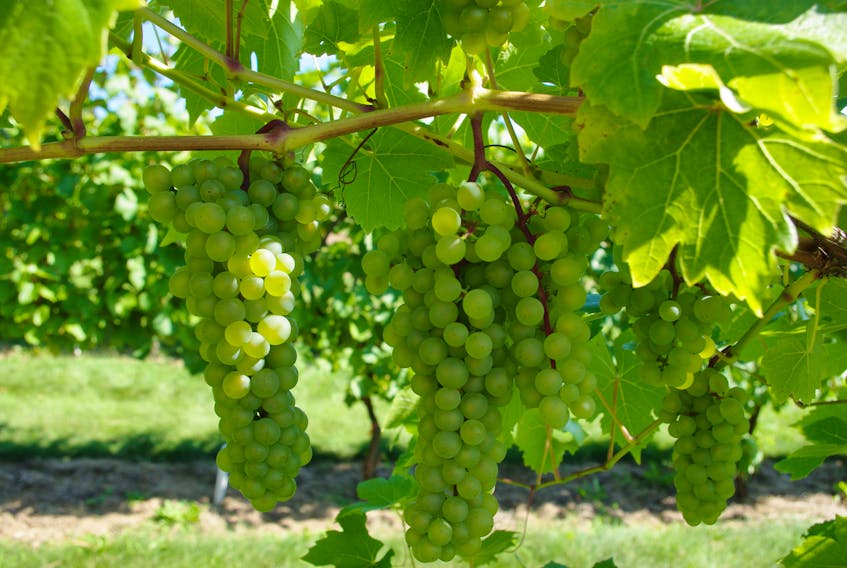Dreams of another great grape harvest this fall for the Nova Scotia wine industry may already have gone up in smoke.
Unseasonably cold temperatures early Monday morning brought “severe” damage to vines, and had vineyard owners in the fields overnight.
At least one winery, Lightfoot & Wolfville, lit fires in the vineyards but most found the weather conditions meant that wouldn’t work.
“I know the theory behind doing it but that morning the air was so still, with no breeze, smoke will only go straight up in the air. People who lit fires I know experienced that, that it wouldn’t form a cloud over your crop and that’s the theory behind it, that if there’s a little downward pressure and a little breeze it can form a cloud and protect. It can and does work for growers everywhere, but in this case there was not an ounce of breeze that morning,” said Pete Luckett, owner of Luckett Vineyards.
“There’s nothing to do. There was no warm air to push down. There’s always the thought ofrenting a helicopter, and vineyards do it around the globe when they get these conditions, especially if you’ve got a giant investment in a vineyard, having a helicopter hover above becomes reality for a lot of guys.”
Luckett has beeng growing grapes for 16 years and has never before experienced a frost as late as June 4.
“It was a surprise and a wakeup call for everybody, as we maybe got lulled into a false sense of security thinking climate change is with us and we can do anything, then boom. It was a big shocker for everybody,” he said. “We know the damage is severe, but it’s hard to evaluate for probably four or five days until you get some sunshine on the vines. What’s going strong will possibly perk up, what’s not will die or fall off or whatever it’s going to do.”
Luckett spent part of the winter in New Zealand where, he said, using helicopters to blow warm air down on vines is common practice. In Ontario’s Niagara winegrowing region, large wind machinesare used. “Maybe we’re naive, but I’ve never thought that we needed them here because we’re blessed with these ocean currents that have always kept frost away from our vineyards, as opposed to places like Niagara, which seem to be really susceptible to frost,” he said. “That’s why you’ll see a lot of wind machines there.”
They also had frost at Avondale Sky winery, but the decision there, too, was to not light fires in the vineyard.
“We didn’t spark anything up. It’s not really effective unless you’ve got enough of a slope and the air’s moving a bit. It was just too still. We recorded minus-three here,” said winemaker Ben Swetnam, adding their previous late date for frost was May 29. “We’re just crossing our fingers right now, and see how things look in a few weeks.”









